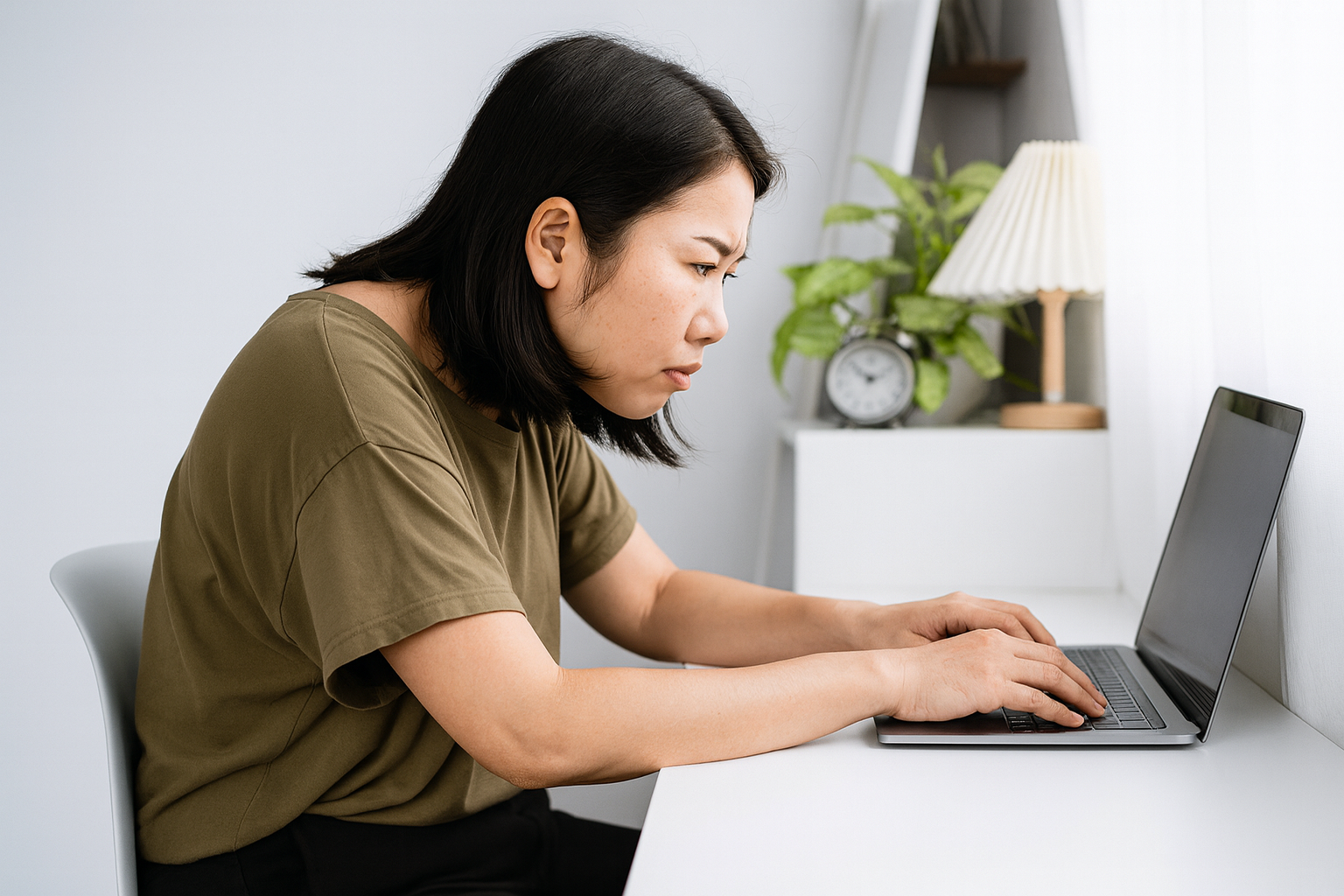What a pain in the neck!
Our modern lifestyle of extensive screen use and sedentary living can often result in poor postural habits. One that I see in my clinic often is the forward head posture. I think most people know what I mean when I refer to this. (see photo 1)
Photo 1 - Forward head posture
These patients often complain of pain in the back of the neck, upper trapezius (the muscles between the base of the neck and the shoulder), and even running down between the shoulder blades. They often work at a desk and look at a computer screen a good part of the day. (to be sure, forward head posture can result from many things, not just desk jobs!) They might describe different attempts at chiropractic neck adjustments or getting deep massage to the posterior neck, shoulders, and upper back. That’s when I think of the old adage of my mentor, John Barnes—” Find the pain, look elsewhere for the cause.”
As you sit at the computer, craning your neck into that forward position to see your screen, the muscles and fascia of both the front and the back of your neck are shortening. Because of the location of their attachment points, these tight and shortened anterior muscles pull the vertebra in your neck forward over your chest/torso resulting in a forward head posture. Research has shown that this faulty posture is akin to having up to 42 pounds of force working on the neck muscles. It’s no wonder they hurt!
But how often does your massage or physical therapist touch in the front part of your neck? This is one of the first places I address with patients having these complaints. In my practice, I work manually to gently release the sternocleidomastoid, and the scalene muscles, and their associated fascia as well as the posterior neck muscles. The vertebrae can now ease back into a more vertically stacked alignment, the neck elongates, and the tension in the upper trapezius and levator scapulae dissipates. (see photo 2)
Photo 2 - Cervical Muscles
Note: Also the yellow nerves poking through the scalene muscles near the bottom of the photo. When these muscles are tight, they can compress the nerves causing numbness and tingling into the arm and hand. These symptoms are often diagnosed as thoracic outlet syndrome or cervical radiculopathy.
The following photos show the anterior neck stretches that I give to my patients to help maintain improved posture and relief of pain. Always keep in mind that we want to stretch with low intensity and long duration…. minutes, not seconds!
To stretch the right side (photo 3), turn your head to the left and slightly back. Reach your right hand down and out toward the floor as shown. Place your left palm just under your collar bone and sink down into the skin. Now slowly and gently drag that palm in the same direction as your right hand. Explore how rotating your head at different angles emphasizes slightly different aspects of the neck. Maybe try thrusting your lower jaw forward or sideways just a tiny bit and feel into that. Move slowly and subtly and maintain a gentle stretch for a total of 2-3 minutes if you can. Release slowly and do the same on the other side.
Photo 3 - Right side stretch
To stretch more generally the entire front of the neck (photo 4), simply extend your head back slightly (for those of you with looser joints, don’t let it just drop back, control it!) Place both palms stacked one over the other just below the collar bones, sink in, and drag the skin downward. Breathe and maintain that stretch for 2-3 minutes.
Photo 4 - Front neck stretch
If you feel the back of your neck getting fatigued or uncomfortable in any way, try the stretches lying at the corner of your bed mattress (photos 5 & 6). This way you will still get a little bit of extension but will feel much more supported.
Photo 5
Photo 6
***** If at any time you feel dizzy or lightheaded, STOP the stretch and seek advice from your therapist before proceeding!
Stay tuned for more great info coming your way!





